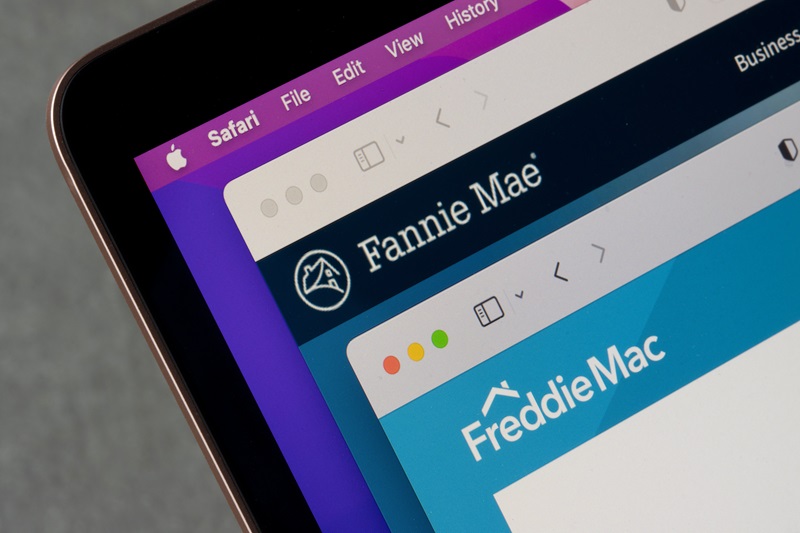According to a report from Bloomberg News, President Donald Trump has engaged with some of the nation’s top banking minds in order to explore bringing both Fannie Mae and Freddie Mac public. Fannie Mae and Freddie Mac, the government-sponsored enterprises (GSEs), help provide stability and affordability to America’s home mortgage market. The National Association of Realtors (NAR) reports that Fannie and Freddie support approximately 70% of the U.S. mortgage market.
President Trump has reportedly met with J.P. Morgan CEO Jamie Dimon and Goldman Sachs CEO David Solomon on the matter, and meetings are anticipated with Bank of America CEO Brian Moynihan in the near future.
During these strategic sessions, Trump has reportedly discussed ideas and strategies on launching large-scale initial public stock offerings (IPOs) for Fannie Mae and Freddie Mac, and how some of the nation’s major banks like Chase and Bank of America could participate in the process.
On September 6, 2008, with consent of both Fannie Mae’s and Freddie Mac’s Boards of Directors, the Director of the Federal Housing Finance Agency (FHFA) exercised statutory authority to place each GSE into conservatorship. This move established the two conservatorships in response to a deterioration in the housing markets that severely damaged the financial condition of each, and left both of them unable to fulfill their missions without government intervention.
A topic of Trump’s agenda since taking office, the President addressed the topic on the social media outlet Truth Social in late May, making his intentions known on the long-discussed privatization of the GSEs.
“I am giving very serious consideration to bringing Fannie Mae and Freddie Mac public,” said President Trump via a post via his Truth Social account @realDonaldTrump. “I will be speaking with Treasury Secretary Scott Bessent, Secretary of Commerce Howard Lutnick, and the Director of the Federal Housing Finance Agency, among others, and will be making a decision in the near future. Fannie Mae and Freddie Mac are doing very well, throwing off a lot of CASH, and the time would seem to be right. Stay Tuned!!”
Barron’s reported that Fannie Mae and Freddie Mac stocks traded more than 30% higher after President Trump’s post on the GSEs’ going public.
In a January 2025 paper issued by Moody’s Analytics, Fannie and Freddie’s Implicit Guarantee—Another Iceberg on the Path to Privatization, authors Jim Parrott, Nonresident Fellow at the Urban Institute and co-owner of Parrott Ryan Advisors, and Dr. Mark Zandi, Chief Economist of Moody’s Analytics, wrote about the hurdles that must be overcome to bring Fannie and Freddie public. “It would eventually involve the largest initial public offering in history, resolving a taxpayer investment of $330 billion that cannot easily be written down, and setting a fee for Treasury’s $250 billion line of credit that reflects its value but does not bankrupt the GSEs, all while transitioning much of the nation’s mortgage infrastructure into private hands during the worst housing affordability crisis in a generation,” stated the authors in the report.
In separate findings, Dr. Zandi estimated in 2024 that privatization of the GSEs could cost the typical American taking out a new mortgage between $1,800-$2,800 annually.
“The GSEs’ conservatorship must ultimately come to an end, if only to bring long-term stability to the well-functioning housing finance system we have today,” wrote Parrott and Dr. Zandi. “But it should only be done in a way that actually improves the system, ideally with legislation that locks in what works and makes explicit the full breadth of government support the GSEs depend on to play the role we need of them. After all, ending the conservatorship is in itself of no value and would come at considerable cost if it leaves the system less liquid and stable.”
In anticipation of a sale of Fannie and Freddie, Reps. Tom Suozzi and Nicole Malliotakis have introduced a bipartisan bill calling for the government to dedicate as much as $250 billion received from ending the conservatorship of the GSEs to be invested in the construction of up to 3.5 million affordable housing units.
Under the Housing for U.S. Act, union labor would be contracted to build up to 3.5 million housing units, dedicated specifically for middle-class Americans. After 10 years, the remaining funds would be used for deficit reduction. The Suozzi/Malliotakis measure calls for the creation of a federally backed, low-cost loan program that will:
- Build new housing units across the country.
- Serve working families earning up to 150% of Area Median Income (AMI)—more than $210,000 per year for a family of four in high-cost areas like New York City.
- Prioritize ownership and affordability for teachers, nurses, first responders, tradespeople, and other Americans who power U.S. communities.
“If Fannie and Freddie are released, the government could recoup $250 billion,” said Rep. Suozzi. “We should capitalize on this moment by using these funds to build homes for men, women, and families in the American middle-class, and we should pay union workers to do it. It’s good for the economy, good for families, and good for America.”





